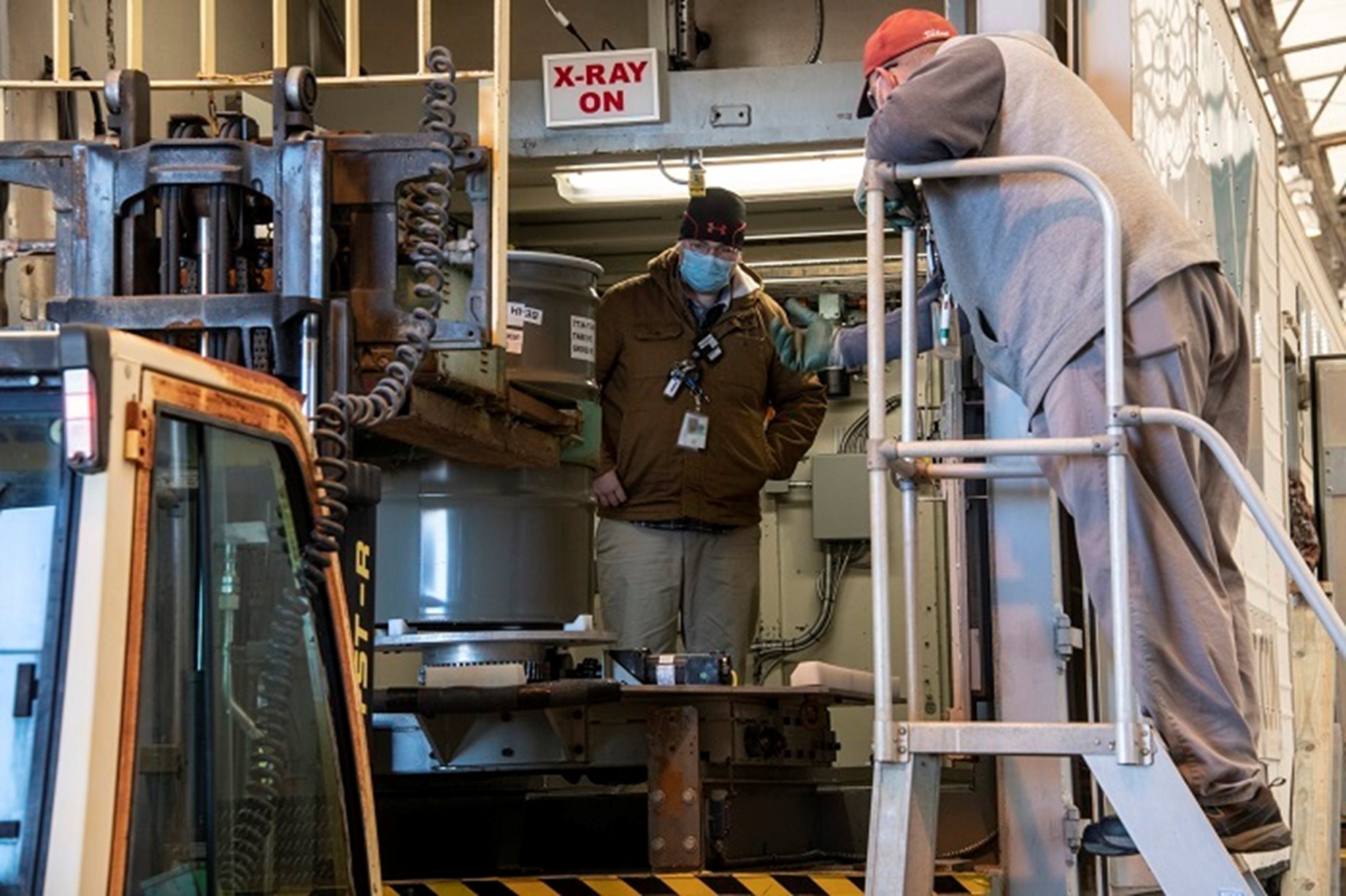Energoatom issued this graphic dismissing Russian claims of control of Zaporizhzhia as “fake” on February 28. (Image: Energoatom)
Denying a Russian claim of control of the Zaporizhzhia nuclear power plant, Energoatom earlier today declared that “Russian propaganda media reports that the invaders allegedly took control of the Zaporizhzhia NPP are a cynical fake.” According to Energoatom, all four of its nuclear power plants are under the control of Ukraine and are operating normally with enhanced defenses.
Palisades nuclear plant. (Photo: Entergy Nuclear)
In the spirit of the letter sent earlier this month to California Gov. Gavin Newsom urging the continued operation of Diablo Canyon beyond 2025, the Climate Coalition—a pronuclear group based in Menlo Park, Calif.—has drafted a similar letter to state officials in Michigan concerning the Palisades nuclear power plant.
The letter, which at this writing has over 260 signatories, implores Gov. Gretchen Whitmer and members of the Michigan legislature to take action to save Palisades. Owner and operator Entergy has slated the plant for permanent closure in May, nine years before the expiration of its operating license.
An illustration of a potential mobile microreactor site at Test Pad D in INL’s Critical Infrastructure Test Range Complex for the grid operation phase of Project Pele. (Image: DOD)
The U.S. Department of Defense (DOD) is looking to reduce its reliance on local electric grids and diesel-fueled generators at military installations. Project Pele is designed to demonstrate the technical and safety features of mobile microreactors capable of generating up to 5 MWe.
February 24, 2022, 9:48AMUpdated February 24, 2022, 3:10PMNuclear News A map of Ukraine and the nuclear sites around the country.
Russian forces invaded Ukraine today in what news sources are calling the largest military attack of one state against another on the European continent since World War II. These developing events follow an extraordinary meeting of the NATO-Ukraine Commission in Brussels on February 22, when NATO secretary general Jens Stoltenberg said that Russia’s recent actions constituted “serious escalation” of tensions in the region and that Russia had shifted from covert attempts to destabilize Ukraine to overt military action. Well before this juncture was reached, news outlets had questioned the readiness of Ukraine’s nuclear power fleet to operate safely in a country at war and ensure energy security, while Energoatom, which operates all of Ukraine’s nuclear power reactors, has issued assurances of safety and security.
NRC-approved Framatome shipping container. (Photo: Framatome)
Framatome announced on February 22 that the Nuclear Regulatory Commission has approved a license amendment that would allow Framatome’s shipping containers to transport, in the United States, fresh nuclear fuel assemblies containing uranium enriched up to 8 percent uranium-235.
Light water reactor fuel with higher enrichments and burnup capabilities than currently used under low-enriched uranium regulation could improve electricity generation and fuel utilization, possibly improving plant economics and providing more flexible reactor performance through extended operating cycles and more efficient core configurations.
Fuel preparing to be unloaded outside of Vogtle-3 last month. (Photo: Georgia Power)
Commercial operation dates for the two new reactors under construction at the Vogtle nuclear plant have been pushed back yet again, adding to the project’s total cost, Southern Company announced last week. The Vogtle plant is near Waynesboro, Ga.
During its February 17 fourth-quarter earnings call, Southern reported that the projected start dates for both reactors were being extended by three to six months. Vogtle-3 is now expected to begin providing electricity to Georgians in the fourth quarter of 2022 or first quarter of 2023, with Vogtle-4 coming on line in the third or fourth quarter of 2023.
Instrumentation at Oak Ridge National Laboratory’s Spallation Neutron Source, an accelerator-based facility that provides the most intense pulsed neutron beams in the world for scientific research and industrial development. (Photo: ORNL)
Researchers advancing particle accelerator technology for medical, security, energy, and industrial applications have a new funding opportunity announced on February 16 by the Department of Energy’s Office of Science (DOE-SC). The funding will support research to advance particle accelerator technology for medical, security, energy, and industrial applications. Grants will be awarded for work focused on innovation, technology transfer, and supply chain resiliency that falls under one of two DOE-SC programs: the Accelerator Stewardship program, which supports cross-disciplinary teams to solve high-impact problems, and the Accelerator Development program, which is aimed at strengthening domestic suppliers of accelerator technology.
An aerial view of Ontario’s Darlington Nuclear Generating Station. (Photo: OPG)
Ontario Power Generation has passed the midway point in its C$12.8 billion (about $10 billion) Darlington nuclear plant refurbishment project with the start of work on Unit 1, the company has announced. The unit is expected to be ready for grid reconnection in the second quarter of 2025.
Darlington houses four 878-MWe CANDU pressurized heavy water reactors, all of which entered commercial operation in the early 1990s. The plant is located in Clarington, Ontario, Canada.
The Diablo Canyon nuclear power plant
The San Luis Obispo County Board of Supervisors earlier this week endorsed extending the life of Diablo Canyon—California’s last operating nuclear power facility—which owner and operator Pacific Gas and Electric Company has scheduled for permanent closure in 2025. The two-unit, 2,289-MWe plant is located in San Luis Obispo County, near Avila Beach.
Operators load a TRU waste drum into a real-time radiography unit for characterization at the Solid Waste Management Facility at the Savannah River Site. (Photos: DOE)
Operators at the Savannah River Site’s Solid Waste Management Facility can now characterize and certify newly generated TRU waste through the use of a real-time radiography unit that uses an X-ray system to examine the contents of waste containers. The equipment was recently installed to meet updated requirements set by the Department of Energy’s National TRU Program that involve evaluating the containers for chemical compatibility and oxidizing chemicals.
The shipments of TRU waste from SRS, in South Carolina, are sent to the Waste Isolation Pilot Plant (WIPP), in New Mexico, for disposal.






 An
An 







